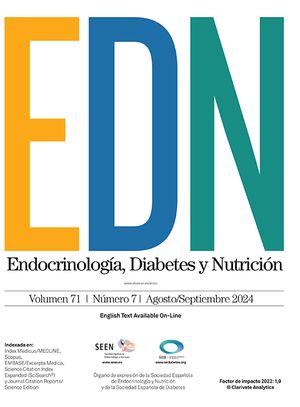En la actualidad, el diagnóstico de la deficiencia de hormona de crecimiento en adultos depende de pruebas de estímulo realizadas en un contexto clínico concreto. La mayoría de los autores recomiendan el test de tolerancia a la insulina como prueba de primera línea; no obstante, y a la vista de los datos aportados en la presente revisión, la preferencia se va inclinando por pruebas que no tengan tantas limitaciones e incomodidades como la hormona liberadora de hormona de crecimiento (GHRH) + arginina y la llamada “prueba combinada GHRH + GHRP-6”. Esta última es la que reúne casi todas las condiciones para ser la prueba ideal, y nosotros la recomendamos como prueba de primera línea; cabe recordar que esta prueba se ha desarrollado fundamentalmente en centros españoles.
Las otras pruebas diagnósticas disponibles tienen limitaciones. No obstante, un valor bajo de factor de crecimiento similar a la insulina tipo 1 (IGF-I) en un paciente con otros defectos hormonales de la función antehipofisaria sería altamente sugestivo de déficit de hormona de crecimiento.
La búsqueda de nuevas pruebas diagnósticas, sencillas, reproducibles, seguras y baratas seguirá siendo materia de investigación hasta que se disponga de una prueba que reúna todas esas condiciones.
Currently, the diagnosis of growth hormone (GH) deficiency depends on stimulation tests performed in a specific clinical context. Most authors recommend the insulin-tolerance test (ITT) as the first line investigation. However, in view of the data described in the present review, tests without the limitations and disadvantages of ITT are increasingly preferred. These tests include GHRH+arginine and the combined GHRH+GHRP-6 test. The latter, which has been developed mainly in Spanish centers, meets nearly all the conditions necessary to be the ideal test and we recommended it as the first line test.
The other diagnostic tests available present numerous limitations.
Nevertheless a low insulin-like growth factor (IGF1) value in patients with other anterior pituitary hormone deficiencies strongly suggests GH deficiency. Figure 1 shows an algorithm for the diagnosis of GHD in adults.
The search for new, simple, reliable, safe and inexpensive diagnostic tests will continue to be the aim of research until a test that unites all these conditions is available.




